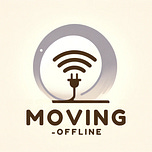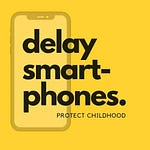Introduction
In today's fast-paced digital world, it's easy to get caught up in the constant stream of notifications and distractions that our smartphones and devices bring. However, finding a balance between the online and offline worlds is crucial for our overall well-being. In this article, we'll explore a simple yet effective methodology I’ve found helpful over the years that can help you achieve more offline moments in your life. This approach involves three fundamental steps, along with a bonus tip, to disconnect and reconnect with the world around you
.
Step 1: List Your Essential Apps and Services
The journey to digital balance begins with identifying the apps and services that are truly essential for your daily life. Start by taking a piece of paper and numbering it from 1 to 10. These ten slots are reserved for apps or services that are not merely convenient but are crucial for your daily functioning.
Consider the tools that enable you to put food on the table, stay connected with loved ones, or add value to your life. For instance, in my list, I rely on email for work communication, WhatsApp for global connections, navigation apps like maps, Libby for audiobooks, messages for quick communication, the phone for essential calls, podcasts for staying informed, music for relaxation, and the calendar for organization. These apps form the backbone of my digital life.
The key here is to be selective and focus on what genuinely adds value to your daily routines. Once you've identified your essential apps and services, you're ready for the next step.

Step 2: Select the Right Devices
Now that you've compiled your list of essential apps and services, it's time to determine which devices you'll use to access them. I suggest adopting a dual-device approach, consisting of a work phone and a personal phone.
Your work phone should be dedicated to professional use, with only the essential work-related apps installed. This clear separation between work and personal devices helps maintain a healthy balance and reduces distractions. When you're not at work, switch to your personal phone, allowing you to enjoy a more focused and disconnected personal time.
Consider which devices align best with your needs and lifestyle. If you find that smartphones are causing excessive distractions, consider opting for a basic phone paired with a dedicated music player or other specialized devices that cater to your specific requirements.

Step 3: Schedule Device Usage
With your essential apps matched to their respective devices, it's time to create a structured schedule for when and how you'll use them. Establishing clear boundaries between your online and offline activities is vital for achieving digital balance.
For example, you can designate certain hours of the day or specific days of the week for online engagement. Likewise, set aside periods of disconnection during your day or week. This deliberate scheduling ensures that you maintain a healthy distinction between your digital and offline life.
By adhering to a well-defined schedule, you regain control over your time and avoid the constant distractions that digital devices can bring.
Bonus Step: Schedule Offline Activities
In addition to scheduling device usage, consider incorporating offline activities into your calendar. This step is where the true transformation happens. Allocate time for activities such as going to the gym, attending sports events, spending quality time with friends without digital distractions, or simply taking peaceful walks in nature.
Hardcoding these offline moments into your schedule reinforces your commitment to prioritizing real-world experiences. Face-to-face interactions with loved ones and friends can deepen your connections and lead to a more fulfilling life.

Conclusion: Achieving Digital Balance
In conclusion, embracing the art of disconnecting and reconnecting is a powerful strategy for achieving balance in your digital life. This methodology of three core steps, along with the bonus tip, empowers you to regain control of your time and invest it where it matters most.
Your digital devices should enhance your life, not dominate it. By engaging in thoughtful conversations with yourself, your partner, or friends about the life you aspire to create, you can embark on a journey to prioritize your offline life and enjoy a more fulfilling everyday experience.
If you found this methodology valuable, consider sharing it with others. By implementing these steps and finding your path to digital balance, you can embrace the beauty of offline moments and lead a more intentional and fulfilling life. Have a great weekend!














Share this post